I have 2 lists with lot of sub-lists in it (approx 28000) like below:
list1 = [[1,0,0],[1,0,1],[1,1,0],[1,2,0],[2,0,1],[2,1,1]]
list2 = [[1,0,0],[1,0,1],[1,0,2],[1,1,0],[1,1,1],[1,2,0],[1,2,1],[2,0,1],[2,0,2],[2,1,1],[2,1,2],[3,0,1]]
Each sub-list would always have 3 values. Consider them as [x,y,z]
Now I want to get counts like below, when I do the comparison among list1 and list2:

This count is calculated like for [1,0,0],[1,0,1],[1,1,0],[1,2,0]: x is 1, for x value how many y values(0,1,2) and how many z values(0,1) are there.
So for x=1, in list1, y=3 and z=2.
Count would be taken on y and z values.
Kindly let me know if anyone have any ways to do this.